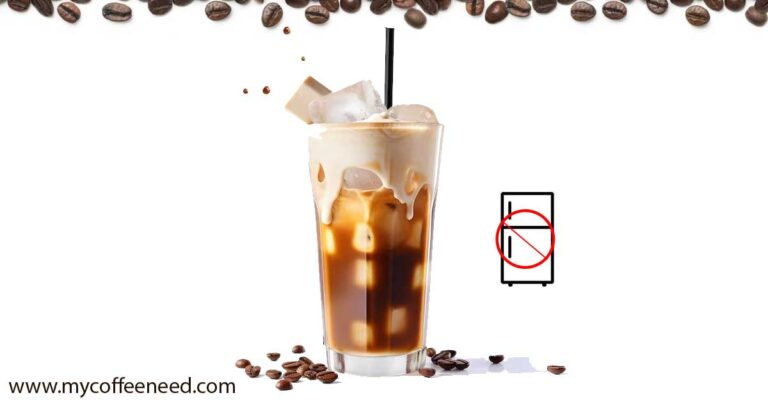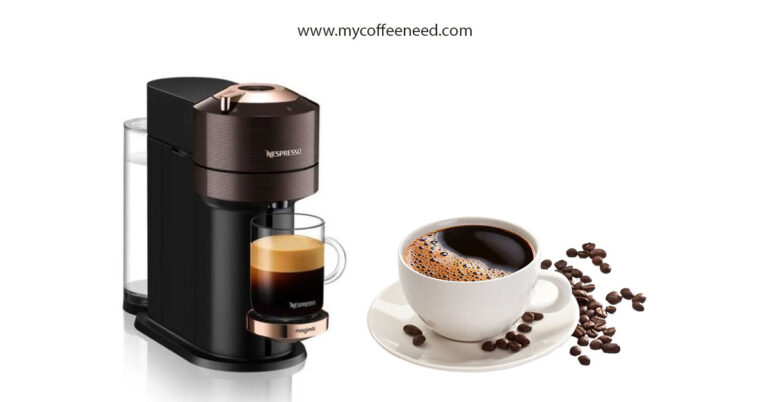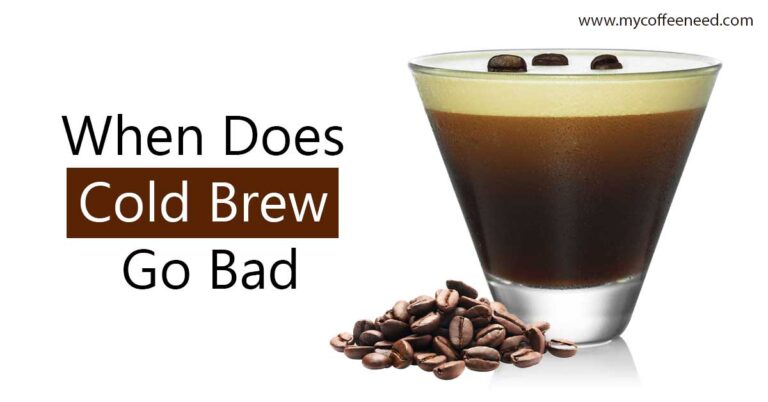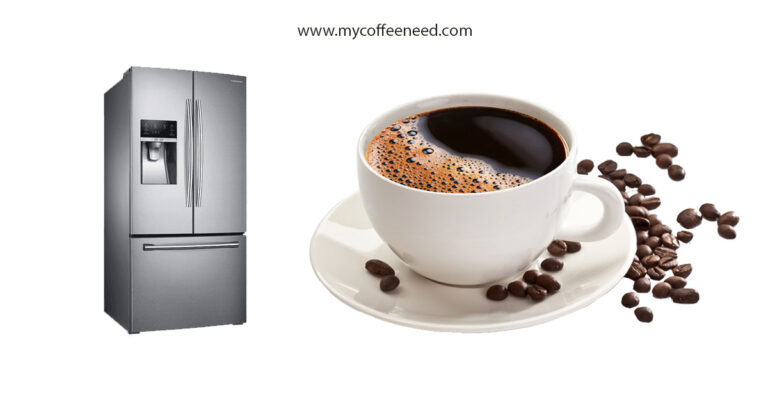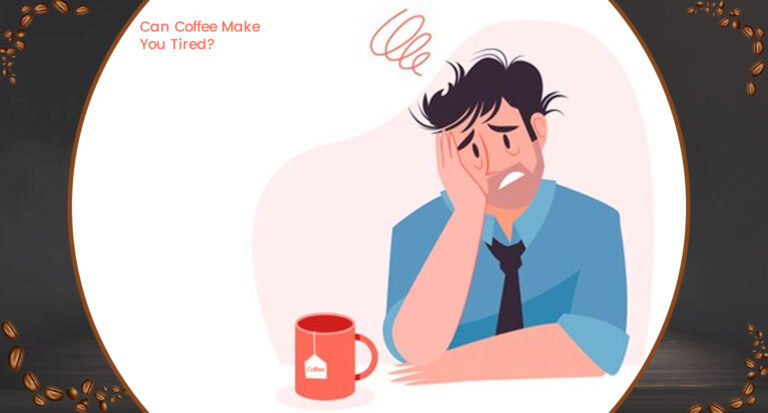How many ounces in a 12 cup coffee pot?
In the world of coffee enthusiasts, achieving that ideal cup of java is both an art and a science. Whether you’re a passionate coffee lover or just someone who needs their morning pick-me-up, understanding the precise measurements is key to brewing the perfect pot. But here’s the million-dollar question: How many ounces are in a 12-cup coffee pot?
In this comprehensive guide, we’ll delve into the intricate details of coffee measurement, from fluid ounces to coffee-to-water ratios, and explore how these factors impact the flavor and strength of your brew.
So, grab your favorite mug, and let’s embark on a journey to brew the perfect cup of coffee tailored to your taste.
Decoding the Coffee Measurement Maze
To master the art of brewing coffee, one must first comprehend the essential units of measurement: ounces and cups. In the United States, where coffee is a daily ritual for many, these units play a crucial role in crafting that invigorating morning cup.
So, let’s break it down:
How many ounces are in a standard 12-cup coffee pot? The answer lies in the details. A standard 12-cup coffee pot typically yields 60 fluid ounces of liquid gold.
Each cup, in this context, equals approximately 5 fluid ounces. However, remember that the concept of a “cup” can vary based on personal preference and different brewing methods.
Now, when it comes to ounces of coffee grounds or water, precision becomes paramount. The golden ratio of coffee-to-water, often considered the secret to a delicious cup of coffee, hovers around 1 to 2 tablespoons of coffee grounds per 6 fluid ounces of water. But, as we’ll explore, there’s room for personalization here too.
Stay tuned as we unravel the mysteries of measuring coffee and discover how these numbers translate into the perfect brew.
Whether you prefer a stronger coffee kick or a milder morning cup, we’ve got you covered with the know-how to make it happen.
Different Types of Coffee Pots
Exploring Your Brewing Options
When it comes to brewing the perfect cup of coffee, your choice of coffee pot can significantly influence the final flavor and strength.
Here, we’ll take a closer look at various coffee pot types, each with its unique features and characteristics.
Standard 12-Cup Coffeemaker
The workhorse of many kitchens, the standard 12-cup coffeemaker is a staple in American households. It’s designed to brew a generous pot of coffee, perfect for sharing with family or for that much-needed morning caffeine boost. Understanding how to maximize this machine’s potential is essential for coffee enthusiasts.
French Press:
For those who savor a full-bodied, rich coffee experience, the French press is a go-to choice. It allows you to control every aspect of the brewing process, from grind size to steeping time, resulting in a robust and aromatic cup of coffee.
Drip Coffee Maker:
Efficiency meets convenience with the drip coffee maker. It’s the preferred choice for busy mornings when you need your coffee fix pronto.
We’ll explore how to get the most flavor out of your drip coffee maker and discuss the importance of factors like water temperature and coffee grind.
Single-Serve Coffee Maker:
Single-serve coffee makers cater to the modern coffee lover’s need for speed and customization. Whether you’re brewing just one cup or experimenting with various flavors, we’ll delve into the nuances of using these nifty machines.
Mr. Coffee:
The name Mr. Coffee has become synonymous with coffee makers themselves. As one of the most recognized brands in the industry, understanding how to make the most of your Mr.
Coffee machine is essential. We’ll provide tips and tricks to ensure your Mr. Coffee delivers a consistently excellent brew.
Whether you’re loyal to your standard 12-cup coffeemaker, a fan of the French press, or curious about exploring other brewing methods, we’ll guide you on your coffee-making journey.
Get ready to elevate your coffee game, regardless of the coffee pot sitting on your countertop.
Coffee-to-Water Ratio
The Secret Formula for Flavorful Coffee
Achieving the perfect cup of coffee is all about balance, and the coffee-to-water ratio is the secret formula that unlocks the flavors you crave.
Whether you’re using a standard 12-cup coffeemaker, a French press, or any other brewing method, getting this ratio right is essential.
So, let’s dive into the details:
The Golden Ratio
The golden ratio for coffee-to-water is often considered the key to a delicious cup of coffee. It typically involves using about 1 to 2 tablespoons of coffee grounds for every 6 fluid ounces of water.
This ratio strikes a balance between strength and flavor, allowing you to tailor your brew to your taste.
Adjusting for Personal Preference
Remember, this ratio can be adjusted based on your personal preference. If you prefer a stronger coffee, you can increase the amount of coffee grounds within reason. Conversely, if a milder cup is your goal, use slightly less coffee.
Considering Your Coffee Pot
The type of coffee pot you use also plays a role in the coffee-to-water ratio. For example, with a standard 12-cup coffeemaker, you’ll want to measure your coffee and water based on the number of cups it’s designed to brew. Understanding your pot’s capacity is crucial to getting the ratio just right.
Exploring Different Brewing Methods
Keep in mind that different brewing methods may have their own unique recommendations. For instance, a French press might require a coarser grind and a slightly different ratio to bring out its full potential. We’ll explore these nuances for each brewing method in detail.
In our quest for the perfect cup of coffee, mastering the coffee-to-water ratio is a significant milestone. We’ll guide you through the specifics, ensuring that every sip of your morning brew is a delightful experience tailored to your taste buds.
Coffee Ground and Water Measurements:
The Precision Behind Your Morning Ritual
In the pursuit of crafting the perfect cup of coffee, precision is your best friend. Understanding the measurements of coffee grounds and water is the cornerstone of your coffee-making journey. Let’s break it down:
Tablespoons of Ground Coffee:
The measurement of coffee grounds often comes down to tablespoons. A standard coffee scoop typically holds about 2 tablespoons of ground coffee.
When following the golden ratio, you’ll use 1 to 2 tablespoons of coffee grounds for every 6 fluid ounces of water. Adjust this based on your taste preferences for a stronger or milder brew.
Ounces of Water:
Water, the other vital component, is measured in fluid ounces. A standard 12-cup coffee pot yields around 60 fluid ounces of brewed coffee.
Each “cup” in this context equates to approximately 5 fluid ounces. Ensure that you’re adding the right amount of water for your pot’s capacity to maintain the coffee-to-water ratio.
Adhering to the Golden Ratio:
The golden ratio, as mentioned earlier, is the key to unlocking the perfect cup. For a standard 12-cup pot, you’ll typically use 12 to 24 tablespoons of coffee grounds and 72 to 144 fluid ounces of water.
However, these measurements can be adapted to suit your preferences and brewing method.
Exploring Different Brewing Methods:
Each coffee pot type may require slight adjustments in measurements. For example, a French press may call for a coarser grind and a different ratio, while a single-serve coffee maker demands precise measurements for a single cup. We’ll dive deeper into these nuances for various brewing methods.
In the world of coffee, precision in your measurements is the key to consistency and flavor. Armed with the knowledge of coffee ground and water measurements, you’re on your way to becoming a true coffee connoisseur, brewing your ideal cup, morning after morning.
General Guideline
Navigating Coffee Brewing with Confidence
When it comes to making coffee, having a general guideline to follow can be incredibly valuable. It serves as your compass in the vast world of coffee-making, ensuring that you consistently brew a satisfying cup. Here’s what you need to know:
The Coffee-to-Water Ratio
As a general guideline, aim for the classic coffee-to-water ratio of 1 to 2 tablespoons of coffee grounds for every 6 fluid ounces of water.
This ratio strikes a balance between strength and flavor and is a great starting point for any coffee enthusiast.
Adapting to Personal Preference:
While the general guideline provides a solid foundation, it’s important to remember that personal preference plays a significant role.
If you prefer a stronger brew, don’t hesitate to adjust by using more coffee grounds. Likewise, for a milder cup, use less. Your taste buds are the ultimate judge.
Considering Your Coffee Pot
The type of coffee pot you use should also influence your approach. Standard 12-cup coffeemakers, French presses, drip coffee makers, and single-serve machines may require slightly different measurements. We’ll explore these variations to ensure you’re getting the best results.
Personal Preference
Coffee, Tailored to Your Tastes
Coffee is a deeply personal experience, and your preferences matter. Understanding that your perfect cup may differ from someone else’s is key to enjoying your daily brew to the fullest. Here’s how personal preference plays a crucial role:
Strength and Flavor
Your ideal cup of coffee might be bold and intense or smooth and mild. Adjust the amount of coffee grounds and water to achieve the desired strength and flavor. Remember, there’s no one-size-fits-all approach to coffee.
Brewing Method
Whether you’re loyal to your standard 12-cup coffeemaker or passionate about your French press, your choice of brewing method influences your coffee’s taste. We’ll explore how to customize each method to match your personal preference.
Experimentation
Don’t be afraid to experiment. Coffee-making is an art, and you can tweak variables like grind size, water temperature, and brewing time to fine-tune your brew. Your morning cup should reflect your unique tastes.
Embrace your role as the coffee artist, and let your personal preference guide your brewing journey. With a general guideline as your starting point, you have the freedom to create a cup of coffee that’s perfectly tailored to your palate.
Taste Factors
Crafting the Perfect Flavor Profile
The journey to the perfect cup of coffee is a quest for taste perfection. Several factors come into play, each contributing to the flavor profile in its unique way. Let’s explore these taste factors and how they impact your brew:
Golden Ratio
The golden ratio, often referred to as the ideal coffee-to-water ratio, is the cornerstone of flavor. It ensures a harmonious balance between the coffee’s strength and flavor. Get this ratio right, and you’ll unlock a world of delicious possibilities.
Type of Coffee Beans
The type of coffee beans you choose is like choosing a paint palette for your coffee canvas. Arabica beans tend to offer a milder, more nuanced flavor, while robusta beans provide a robust and slightly bitter profile. Understanding these distinctions allows you to tailor your brew to your taste.
Grind Size
The grind size of your coffee beans has a significant impact on the flavor. Coarse grinds work well for French presses, creating a bold and textured cup, while finer grinds are suited for espresso and deliver a concentrated, rich taste. We’ll delve into the art of grinding for your preferred brewing method.
Water Temperature
Water temperature is another taste influencer. The ideal temperature range for brewing coffee is typically between 195°F to 205°F (90°C to 96°C).
Water that’s too hot can result in a bitter taste, while water that’s too cold may lead to under-extraction. Finding the right temperature for your brew is essential.
In the world of coffee, flavor is king. Understanding how the golden ratio, coffee bean type, grind size, and water temperature affect your brew allows you to take control of your coffee’s taste.
Let’s explore each of these elements in detail, ensuring your coffee always hits the right flavor notes.
Techniques for Perfect Coffee
Mastering the Art of Brewing
Brewing the perfect cup of coffee isn’t just about measurements; it’s also about the techniques you employ. With the right skills, you can transform ordinary beans into an extraordinary cup of joe. Here are some techniques to elevate your coffee game:
The Golden Ratio
As we’ve discussed, the golden ratio of coffee-to-water is fundamental. However, it’s not just about the ratio; it’s about how you apply it.
We’ll explore the techniques for evenly distributing coffee grounds and water to ensure a consistent extraction.
Type of Coffee Beans
Different coffee beans require distinct handling. Understanding the nuances of your chosen beans, such as their origin and roast level, empowers you to bring out their best flavors. We’ll delve into techniques for optimizing each bean type.
Grind Size
The grind size influences your coffee’s flavor and extraction speed. Discover the techniques for achieving the perfect grind, whether it’s for a coarse French press or a fine espresso. We’ll also explore how to adjust your grind for different brewing methods.
Water Temperature
Maintaining the right water temperature throughout the brewing process is crucial. We’ll discuss techniques for heating and maintaining water at the ideal temperature range, ensuring your coffee isn’t too hot or too cold.
Brewing Time
The length of time your coffee brews can greatly affect its flavor. Learn techniques for controlling the brewing time to achieve the perfect balance between under-extraction and over-extraction.
Extraction Methods
Explore various extraction methods, from pour-over to cold brew, and learn the techniques for each. Each method offers a unique flavor profile, and mastering the techniques behind them allows you to cater to your preferences.
By honing your coffee-brewing techniques, you can consistently produce a cup of coffee that’s truly exceptional. These skills are your passport to coffee nirvana, where every sip is a delightful experience tailored to your taste buds.
Coffee Brewing for Enthusiasts
For the dedicated coffee lover, coffee isn’t just a beverage; it’s a passion. Brewing that perfect cup becomes an art form, and there are specific considerations that cater to your coffee-loving heart. Let’s dive into these considerations:
Strong Coffee
If you’re the type who craves a robust, wake-up-and-conquer-the-world kind of coffee, we’ve got you covered. We’ll explore techniques and measurements to brew a cup that packs a punch without sacrificing flavor.
Large Mugs
For those who prefer their coffee in oversized mugs, there’s an art to filling that extra space without diluting the brew. Discover how to scale up your coffee measurements while maintaining the perfect taste.
Brewing Process
As a true coffee aficionado, you likely appreciate the intricate details of the brewing process. We’ll take a deep dive into each step, from grinding to extraction, and discuss how to fine-tune each one to suit your discerning palate.
For the coffee lover, every cup is an opportunity to savor the rich flavors and aromas that this beloved beverage has to offer.
Whether you’re seeking strength, have an affinity for larger mugs, or simply relish the brewing process, we’ll guide you on your quest for the ultimate coffee experience.
Standard Coffee Measurements in the United States
Your Roadmap to Consistent Coffee
In the United States, where coffee is an integral part of daily life, there are standardized measurements that ensure consistency in your brew.
These measurements serve as a roadmap for coffee enthusiasts, ensuring that every cup is a delightful experience. Let’s explore these standards:
Cup Measurements
In the U.S., a standard coffee cup is typically defined as 8 fluid ounces (approximately 240 milliliters). This measurement provides a consistent reference point for coffee preparation. It’s the foundation upon which coffee pot sizes, brewing ratios, and serving sizes are based.
12-Cup Coffee Pot
The 12-cup coffee pot is a ubiquitous appliance in American kitchens. It’s designed to brew 12 cups of coffee, following the 8-ounce cup measurement.
This translates to a total capacity of 96 fluid ounces or about 2.8 liters of brewed coffee.
Golden Ratio Reference
The golden ratio for coffee-to-water, which we’ve discussed, often refers to 1 to 2 tablespoons of coffee grounds per 6 fluid ounces of water. In the U.S., where the standard cup is 8 ounces, this ratio translates to 1 to 2 tablespoons per cup.
Understanding these standard measurements is essential for achieving consistent and flavorful coffee, whether you’re using a standard 12-cup coffeemaker, a French press, or any other brewing method. With these measurements as your foundation, you’re well-equipped to embark on your coffee-making journey with confidence.
Coffee Pot Cup Sizes
Your Guide to Coffee Pot Capacity
To coffee pots, the term “cup” can be a bit deceptive. Understanding coffee pot cup sizes is crucial to ensuring you brew the right amount of coffee for your needs. Let’s unravel the mystery behind coffee pot cup measurements:
Standard Cup Size
In the world of coffee pots, a standard “cup” typically refers to 5 fluid ounces (approximately 150 milliliters) in the United States.
This measurement serves as a baseline for coffee pot capacity and is consistent with most coffee makers and recipes.
12-Cup Coffee Pot
One of the most common coffee pot sizes is the 12-cup model. However, this doesn’t mean it brews 12 standard 5-ounce cups. Instead, it yields a total of 60 fluid ounces (about 1.8 liters) of coffee.
This means you can expect around five 12-ounce servings or six 10-ounce servings from a 12-cup coffee pot.
Adjusting for Personal Preference
Keep in mind that the term “cup” can be flexible, especially when it comes to personal preferences. If you enjoy a larger morning cup, you may pour 8 or 10 ounces from your 12-cup pot, adjusting the serving size to suit your taste.
Measuring Cup
For precise measurements, consider using a standard measuring cup to portion out your coffee. This ensures you’re getting the exact amount you desire.
Understanding coffee pot cup sizes is essential for managing your coffee consumption and achieving consistent results.
Whether you prefer a standard serving or like to customize your cup size, these insights will help you make the most of your coffee pot.
Coffee Shops vs Home Brewing
Finding Your Perfect Brew Haven
The age-old debate between coffee shops and home brewing has been a source of contention for coffee enthusiasts.
Each has its unique appeal, and the choice ultimately comes down to personal preference. Let’s explore the pros and cons of each to help you find your perfect brew haven:
Coffee Shops
Pros:
1. Variety and Expertise: Coffee shops offer a wide range of coffee beans and brewing methods. Baristas are often skilled in crafting specialty drinks, providing a diverse coffee experience.
2. Convenience: No need to worry about grinding beans, brewing, or cleanup. Just order, wait, and enjoy your coffee.
3. Social Atmosphere: Coffee shops provide a cozy and social environment, making them ideal for meetings, studying, or simply enjoying coffee with friends.
4. Exploration: Coffee shops are great places to discover new flavors and trends in the coffee world.
Cons:
1. Cost: Frequenting coffee shops can add up quickly. Premium coffee and specialty drinks often come with premium prices.
2. Inconsistency: Quality may vary from one coffee shop to another, and busy shops may rush your order, affecting taste.
3. Limited Control: You have limited control over the brewing process and ingredients, which may not align with your specific preferences.
Home Brewing:
Pros:
1. Cost-Efficiency: Brewing coffee at home is typically more budget-friendly in the long run, especially if you invest in quality beans and equipment.
2. Consistency: You have full control over the brewing process, allowing you to fine-tune coffee-to-water ratios, grind size, and brewing time to suit your taste.
3. Customization: Experiment with different beans, roasts, and brewing methods to create your ideal cup of coffee.
4. Convenience: Brew coffee whenever you want, without the need to leave your home.
Cons:
1. Learning Curve: Achieving the perfect brew can take time and experimentation, requiring knowledge and skill.
2. Equipment Investment: While cost-effective in the long run, quality coffee brewing equipment can have an initial upfront cost.
3. Time and Effort: Home brewing can be time-consuming, especially if you prefer manual brewing methods.
4. Social Aspect: Home brewing lacks the social ambiance of coffee shops, making it less suitable for social gatherings.
Ultimately, the choice between coffee shops and home brewing depends on your priorities. Coffee shops offer convenience and a social atmosphere, while home brewing grants you control, customization, and cost savings.
Many coffee lovers find themselves striking a balance between both, enjoying the best of both worlds to satisfy their caffeine cravings.


